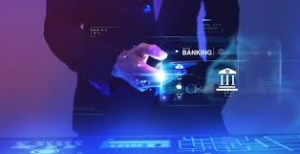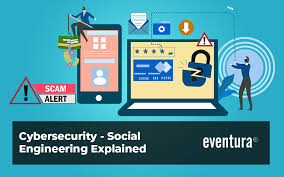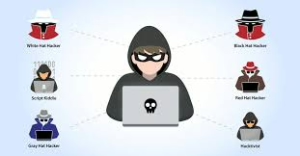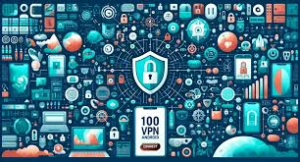In today’s digital landscape, banking applications have become essential tools for conducting financial transactions. Consequently, financial institutions are realising that safeguarding these apps has never been more crucial. The landscape of cybercrime is constantly changing, and as such, banks must adapt their security measures to keep pace with these evolving threats. Fortunately, being large corporations, banks have access to considerable resources that enable them to invest in cutting-edge technologies and develop comprehensive cybersecurity strategies.

However, despite these robust defences, there are instances where the protective barriers established by banks fall short of cybercriminal activities. This vulnerability places a significant onus on customers—particularly small and medium-sized enterprises (SMEs) and micro businesses with ten employees or fewer—who often find themselves at greater risk of cyberattacks. These smaller entities need to take proactive steps by embracing technology and fostering a culture of cybersecurity awareness among their employees.

Regrettably, many consumers have been slow to recognise the importance of this responsibility. As they navigate the complexities of online banking and transactions, it becomes increasingly clear that while banks play a vital role in protecting financial data, individual vigilance is equally necessary in order to combat the persistent threat posed by cybercriminals.
The Evolving Landscape of Cybersecurity in Banking
In today’s digital age, banks are increasingly confronted with a myriad of cyber threats that pose significant risks to the integrity and security of their applications. One of the most prevalent dangers arises from phishing attacks, which cunningly deceive users into divulging sensitive information. These scams often masquerade as legitimate communications, leading unsuspecting individuals to unwittingly share personal details that malicious actors can exploit. Additionally, malware presents a formidable challenge; it can infiltrate banking systems with the intent to either siphon off valuable data or disrupt essential services, causing chaos and loss.
Moreover, cybercriminals’ tactics have become more sophisticated through social engineering. This method involves criminals impersonating trusted entities—such as banks themselves—to manipulate users into actions that compromise their security. Whether it’s persuading someone to click on a harmful link or even transferring funds directly into the hands of fraudsters, these deceptive practices highlight an urgent need for robust protective measures.
As technology advances, particularly with the emergence of generative AI, these threats are evolving at an alarming pace. Banks find themselves in a relentless race to bolster their cybersecurity protocols to thwart potential breaches that could have dire consequences. In this context, Dr Hazel Murray from Munster Technological University recently shared critical insights on Morning Ireland regarding best practices for password management—a foundational element in safeguarding accounts.

While generative AI can serve as a powerful ally in combatting fraud by enhancing detection capabilities and automating responses to suspicious activities, it simultaneously introduces new vulnerabilities. Due to these advancements, the sophistication of cyber-attacks has surged; thus, financial institutions must remain ever-vigilant and adaptable in their defensive strategies.
Despite these challenges, there is a silver lining: banks possess substantial financial resources that enable them to invest heavily in cutting-edge cybersecurity technologies. Implementing key protective measures is not just advisable but essential for maintaining trust and security within the banking sector.
One such measure is multi-factor authentication (MFA). By requiring multiple forms of verification before granting access—such as something known (a password), something possessed (a mobile device), and something inherent (biometric data like facial recognition)—banks significantly mitigate unauthorised access attempts.

Another vital strategy is encryption, the process that renders sensitive information unreadable except for the authorised parties involved: the bank itself and its customers. Today’s standards dictate that end-to-end encryption should be implemented universally across all transactions and communications within banking applications.
Furthermore, regular security audits play an indispensable role in identifying weaknesses within systems before cybercriminals can exploit them. Conducting thorough assessments allows banks to address vulnerabilities and strengthen their defences against potential attacks proactively.
In summary, while banks face daunting cyber threats that continuously evolve alongside technological advancements like generative AI, they also possess both the resources and means necessary for implementing effective countermeasures. Through diligent application of multi-factor authentication, robust encryption methods, regular system audits, and continuous adaptation to emerging threats—financial institutions can fortify their defences against an ever-changing landscape of cybersecurity challenges.

In app development, particularly within the banking sector, it is imperative to adopt secure development practices that can effectively mitigate the risk of vulnerabilities emerging during software updates. To achieve this, financial institutions must establish robust coding standards and engage in consistent code review processes. However, while technology is undeniably pivotal in enhancing security, it is crucial to acknowledge that human error continues to pose a significant threat to organisational safety.
To combat this issue, banks must prioritise investments in extensive cyber-awareness initiatives aimed at both their employees and customers. Regular training sessions for staff about emerging cyber threats and best security practices are essential; these sessions empower employees to identify and appropriately respond to potential cyber-attacks. Yet, the responsibility does not rest solely on the shoulders of bank personnel. It is equally essential for banks to offer resources and guidance that educate customers about prevalent risks such as phishing scams and social engineering tactics.

Providing straightforward advice—like urging customers not to share their passwords or helping them recognise dubious emails—can go a long way in thwarting many potential attacks. Furthermore, simplifying security measures for all clients is paramount. Implementing user-friendly features like biometric authentication methods (such as fingerprint scanning or facial recognition) alongside secure password management tools can significantly enhance customers’ ability to adhere to sound security practices.
When we turn our attention to small and micro businesses, we find a different landscape altogether. Often needing more resources, these entities may need help implementing sophisticated cybersecurity protocols, rendering them more susceptible targets for cybercriminals who are always on the lookout for easier prey. This presents an opportunity for larger banking institutions—equipped with advanced technologies—to extend their support to smaller enterprises facing these challenges.
By leveraging their capabilities and resources, banks have a unique chance to protect themselves and bolster the cybersecurity posture of SMEs and micro businesses within their communities. This collaborative approach could foster a more resilient ecosystem against cyber threats while ensuring that even the most minor players are equipped with the necessary tools and knowledge to safeguard themselves effectively in an increasingly digital world.
To begin with, banks must take proactive steps to assist their small business clientele, which includes SMEs, micro-enterprises, and self-employed individuals, in implementing fundamental cybersecurity measures. One effective way to achieve this is by encouraging these businesses to obtain Cyber Essentials certification. This certification requires them to adhere to a comprehensive checklist of security protocols designed to shield them from prevalent cyber threats.

Moreover, by providing small businesses with access to cost-effective cybersecurity tools and services, banks can significantly enhance their ability to safeguard sensitive data and financial resources. It’s also essential for banks to forge partnerships with cybersecurity experts and industry organisations. Such collaborations would empower SMEs with the necessary knowledge and resources to strengthen their defences against potential cyber intrusions.
The reality of today’s digital landscape is that combating cyber threats necessitates a collective effort; it cannot be tackled in isolation. The challenges posed by banking-related threats are intricate and multifaceted. Protecting consumer information and other sensitive assets is crucial since a breach can lead not only to severe financial losses but also damage an organisation’s reputation in the marketplace.
However, suppose both your bank and you stay aligned with the latest security guidelines and practices. In that case, there’s no need for concern—banking through an app can be just as secure as conducting transactions within a physical branch. With the proper measures in place, customers can confidently embrace digital banking without compromising their safety or peace of mind.

Maxthon
In today’s digital age, safeguarding your online banking information has become more crucial than ever, especially when using a browser like Maxthon. To navigate the web securely and protect your sensitive details, it’s important to adopt some essential strategies that can bolster your security.
First and foremost, the foundation of your online safety lies in creating strong passwords. It’s not just about having a unique password; it should also be complex enough to thwart potential intruders. Aim for a mix of uppercase and lowercase letters, numbers, and special characters to construct a password that is both difficult to guess and robust against hacking attempts. Steer clear of using easily identifiable information such as birthdays or the names of pets—these are often the first things cybercriminals will try.

Next on the list is enabling Two-Factor Authentication (2FA) whenever possible through your banking institution. This feature adds a layer of security by requiring you to enter a verification code sent via text message or email alongside your password. Incorporating this simple step can dramatically lower the chances of unauthorised access to your accounts.
Another vital practice is keeping your Maxthon browser up-to-date. Regularly checking for updates means you’ll benefit from the latest security enhancements and patches designed to protect against emerging threats. Staying current with these updates is one of the simplest yet most effective ways to fortify your defences against potential attacks.
Moreover, make it a habit to clear out your browsing data frequently. By routinely deleting history, cache files, and cookies from your browser, you significantly reduce the amount of sensitive information that could be compromised if someone gains access to your device.
Maxthon also provides a helpful feature known as privacy mode, which can enhance protection during online banking sessions. When this mode is activated, no data—such as cookies or site-specific information—is saved after each session ends, adding an extra layer of anonymity while conducting financial transactions online.
To further elevate your security posture, consider incorporating trusted security extensions or tools specifically designed for protecting online activities into your browsing experience. By diligently implementing these measures, you can create a safer environment for managing your finances in today’s interconnected world.

